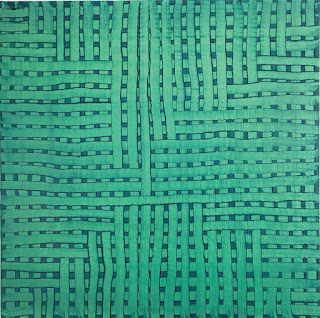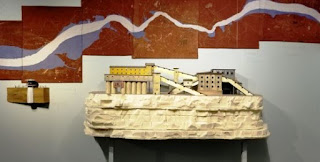 |
| That's me, with the sunglasses, finishing the 2017 Jailhouse Rock 5K in 26:18 |
Few of you would know this, but I am a runner. Not one of
those obsessive marathon or triathlon athletes, but a dedicated runner
nonetheless.
I’ve always done sports and exercise, including soccer,
cycle touring, 20 years in karate training (yes, I have a black belt), and 10
years of Senior League basketball. But running – to my surprise – has become my
#1 choice to stay active and feel healthy.
Scientists agree – research has concluded that running at a
moderate pace for 10-20 miles a week gives the maximum possible boost to
longevity of any human activity (intriguingly, running more than 20 miles a
week nets no further gains). No one knows exactly why this works, but the
evidence is that it reverses the shortening of the telomeres on our chromosomes
– a hallmark of the aging process – thereby increasing lifespan.
Having turned 60 a few months ago, this interests me now more
than ever. I mean, I want to live long enough to do all the stuff I never seem
to have enough time for. But that’s not why I started running. Actually, I
always hated running. Even as an excellent school soccer player I was lazy. My high
school friends who ran track and cross country never even tried to sell me on
it – they knew I was hopeless – and, I admit, I still wonder how any kid could
find distance running enjoyable.
But around 15 years ago I found myself too busy to do sports
that take significant time so, with a YMCA close by, I began doing some
treadmill running as a quick way to get that crucial stress-reducing exercise. But
treadmills are dreadfully boring. So I began to run outdoors in good weather, following
the advice of more experienced guys at the gym on where to go and how to do it
correctly. I also decided to set a goal (otherwise, it’s tough to get
motivated): To run a 5K race in a time I wouldn’t be ashamed of, which I
accomplished after a few months of practice.
I didn’t keep notes, so I’m not sure what pace I was doing back
then, but it was pretty much average for my age, and I was satisfied with that.
I continued to run casually and race occasionally at moderate distances for a
number of years, enjoying the obvious health benefits and sense of
accomplishment that regular exercise will bring.
Only recently (say, in the last three years) have I begun to
treat running as a sport, participating in more races, training in a more
strategic way, and feeling a little more competitive about it. I even have a
Garmin wristwatch now – it can track speed and distance, provide pacing alerts,
and set up run/jog intervals, tools that have enabled me to improve as I apply
some of the advice that more experienced runners have been nice enough to pass
on.
Which reminds me – the second best thing about being a
runner, after the health benefits, is the community. In contrast to my
experiences with basketball, I have never had an argument with anybody
involving running. Unless you’re in a race’s top three finishers overall,
you’re really not racing against the other runners – you’re racing against time
and the inevitable deterioration of your own body. So runners are always very
supportive. I even had a guy once turn to congratulate me when I pushed past
him at the finish of a trail race (I was trying to beat 30 minutes, not him). His
positive response to being outpaced exemplifies the friendly atmosphere of the
many races I’ve participated in over the years.
More about competing: When I was still in my late 50s (oh,
so long ago!), I was at a distinct disadvantage in road races. Because race
results are structured in age groups, usually in 10-year chunks, that forced me
to compete against men five or more years younger. And, because age plays a
huge role in sports ability, despite my natural talent and fairly serious
effort, I’d usually finish in the middle of the 50-59 pack. I accepted that,
never expected to win or place, and never did. Instead of trying to beat other similarly
aged runners (some of whom are so much faster than me that it still boggles my
mind), I’d be striving to match some previous effort of my own, or maybe even
set a new personal best.
 |
| A medal for a geezer |
But, as old Father Time has marched on, it’s gotten harder
to keep up even with myself. And, right on cue, this 60
th birthday year
things are even tougher. Try as I might to improve – or at least maintain – I am
simply weaker and slower than last year. Not that the running doesn’t still go
well or feel good – it does! – but the same effort produces noticeably
diminished results.
Then again, those 53-year-old kids that crushed me in last
year’s races are no longer in my division – suddenly, I’m the baby in the
group. And I’m still running pretty well compared to the past, making me far
more able to compete with the over-60 set.
This new reality didn’t sink in until last week, when I
entered the Dunkin Run, a 5K race that I run every year, always producing average
results. My goal for this year’s race was to break 27 minutes (a feat I
accomplished regularly in 5K runs last year but hadn’t done yet in 2018) and,
with maximum effort, I reached it, finishing in 26:51. Mission accomplished, on
to the next goal.
But then – to my complete surprise – the race results were
posted and I learned I’d finished second in the division! I even received a
medal.
So, now, I’ve got a new problem. The guy that beat me in
this year’s Dunkin Run (a pretty speedy 65-year-old) did it by only 13 seconds.
If I had been just a little better prepared, maybe kept to a more consistent
pace – I could have taken him! As for those phenomenal guys in the 50-59
division? They were still minutes ahead of us – but none of them is anywhere
near 60 yet. In other words, next year a first place finish is within my grasp!
So, it looks like I have a new goal. I’ll be sure to let you
know how it turns out
. But, for now - gotta run!





















































